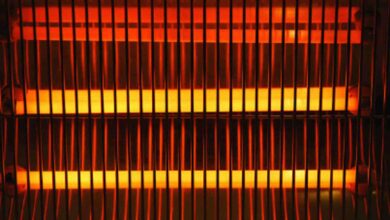Bushing parts play a key role in equipment products, and their manufacturing and processing quality directly affect the performance and life of the product. As most of the bushing parts are thin-walled structures, their precision requirements are high, so the machining process is prone to serious deformation, threatening the product specifications and appearance accuracy. In this article, we will analyze the causes of deformation in the processing of bushing parts and put forward the corresponding solutions to ensure that the parts of high-precision manufacturing.
Table of Contents
Characteristics of Bushing Parts in Machining:
Bushing parts of the blank form of castings, forgings, and bars, its product characteristics include high precision, thin walls, and easy to deform. The key structure includes journal, shoulder, keyway, thread, bore, etc., and the parts size tolerance is extremely high, which does not allow the main parameters to have a big difference. During the metal CNC machining, thin-walled structures are easily twisted or deformed, affecting product appearance and specifications.
Factors to Deform Thin-Walled Bushing Parts:
Factors leading to the deformation of thin-walled parts can be divided into two categories: one is internal stress plastic deformation, mainly from the uneven composition of metal materials or uneven heat treatment process; the second is the distortion caused by human error, such as unreasonable way of tooling and unbalanced clamping force.
Before discussing in depth the deformation control measures in the processing of bushing-type parts, it is worth mentioning that thin-walled bushing-type copper alloy castings in the actual processing, due to the material’s large coefficient of thermal expansion, low compressive strength, and easy to be deformed, coupled with a very significant deformation under the action of the heat of cutting, which has a certain impact on the accuracy of the parts and increases the difficulty of processing. Therefore, we will analyze the processing technology countermeasures for the deformation elements of such parts in the next section.
How to Avoid the Deformation of Bushing Parts?
Here are some methods to avoid deformation when machining bushing parts.
Select Appropriate Quenching and Tempering Treatments to Control Thermal Stress
The most commonly used materials for bushing parts are bronze and brass. Centrifugal casting or sand casting parts blanks, there are air holes, shrinkage holes, coarse grain, and other defects within the parts, reducing the strength of the parts. In order to eliminate the internal stress of the parts, thermal aging treatment is a common method. For copper alloy parts, after tempering treatment, the internal stresses of the parts can be released, more stable after machining. By tempering the parts before semi-finishing turning after rough turning, the deformation of the parts can be effectively controlled.
Choose Clamping to Eliminate Deformation Caused by Clamping Force.
In the clamping process, for thin-walled copper bushing castings, due to their low rigidity, the selection of the clamping force point is critical. If the distribution of clamping force is not balanced, it is easy to produce additional stress, which in turn causes the ductile deformation of the clamping, affecting the specification and appearance accuracy. To reduce deformation, a series of reasonable clamping methods are required.
One common way is to use special lathe chucks, through their good clamping force distribution, can effectively slow down the deformation caused by clamping. Another method is the application of a pressure plate, which reduces the risk of distortion by applying uniform pressure to the part surface, resulting in a more balanced clamping force. In addition, increasing the clamping contact area (which can be used to add the way of an open seam sleeve) is also a feasible option to help improve the stability of the clamping, and reduce deformation.
In actual production, the use of axial clamping mode and process rib is also an effective means. Through scientific and reasonable clamping mode, can not affect the shape and size of the parts under the premise of minimizing the deformation caused by the clamping, to ensure the processing accuracy of the product. In the actual processing of a five-axis linked CNC lathe, selecting the appropriate clamping method can effectively control the deformation of the thin-walled workpiece, so that it remains within the acceptable range.
Suitable Amount of Cutting.
When machining thin-walled parts, the choice of cutting amount is crucial and directly affects the deformation of the parts. Reasonable cutting amount including cutting speed, back eating amount, and feed amount collectively, are the main parameters to adjust the relative movement of the tool and the workpiece and its positional relationship.
In the cutting process, the workpiece is subjected to cutting frictional resistance from the lathe tool, while generating frictional resistance in the opposite direction. Since the lathe tool is stronger than the workpiece, the workpiece undergoes elastic deformation. Excessive use of the tool results in dulling of the tool, which increases the frictional resistance to the casting, which in turn leads to increased ductile deformation of the part.
In order to reduce the deformation of the part, it is necessary to select sharp tools and set appropriate cutting parameters in roughing and finishing respectively. For roughing, moderate depth of cut and feed are taken, while for finishing, the depth of cut and feed need to be reduced to minimize thermal deformation and tool friction caused during the cutting process.
In practice, the size of the front angle of the tool is also a key factor affecting the deformation of parts turning. The front angle directly affects the cutting position deformation degree, tool head strength, heat dissipation, and so on, which in turn affects the surface quality of the parts. The moderate size of the front angle can not only improve the cutting speed and gloss, and reduce the heat generated by the tool, but also extend the life of the tool, helping to maintain the accuracy and finish of the surface of the parts.
Consideration for Environmental Protection and Economic Benefits.
When using CNC technology for thin-walled parts processing, in addition to focusing on the accuracy and deformation control of the parts, it is also necessary to focus on environmental protection. The use of advanced CNC technology and methods to effectively reduce errors and pollution of the environment, can reduce processing costs and improve economic efficiency.
Conclusion:
CNC technology plays a key role in the processing of thin-walled parts. By deeply analyzing the causes of deformation and taking effective measures, the accuracy and efficiency of parts processing can be improved. In the application of CNC technology at the same time, paying attention to the balance between environmental protection and economic benefits will help promote the sustainable development of the thin-walled parts machining manufacturing industry.
Did you find dis article helpful? You can check out our website for more awesome content like this.





